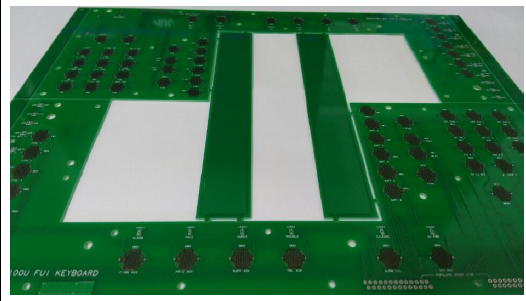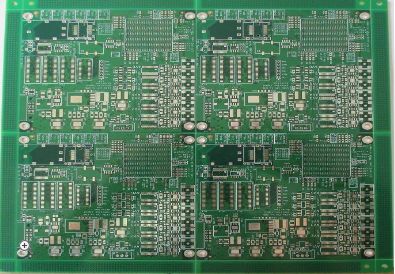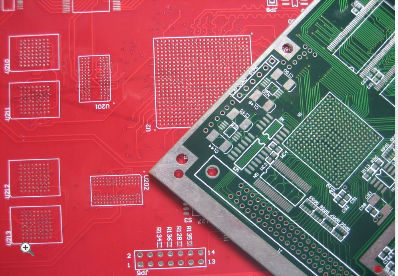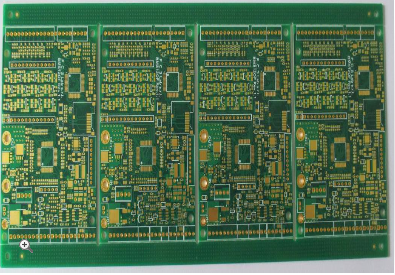-
 Agriculture
Agriculture
-
 Health-Care
Health-Care
-
 Environment
Environment
-
 Construction-Real-Estate
Construction-Real-Estate
-
 Tools-Hardware
Tools-Hardware
-
 Home-Garden
Home-Garden
-
 Furniture
Furniture
-
 Luggage-Bags-Cases
Luggage-Bags-Cases
-
 Medical-devices-Supplies
Medical-devices-Supplies
-
 Gifts-Crafts
Gifts-Crafts
-
 Sports-Entertainment
Sports-Entertainment
-
 Food-Beverage
Food-Beverage
-
 Vehicles-Transportation
Vehicles-Transportation
-
 Power-Transmission
Power-Transmission
-
 Material-Handling
Material-Handling
-
 Renewable-Energy
Renewable-Energy
-
 Safety
Safety
-
 Testing-Instrument-Equipment
Testing-Instrument-Equipment
-
 Construction-Building-Machinery
Construction-Building-Machinery
-
 Pet-Supplies
Pet-Supplies
-
 Personal-Care-Household-Cleaning
Personal-Care-Household-Cleaning
-
 Vehicle-Accessories-Electronics-Tools
Vehicle-Accessories-Electronics-Tools
-
 School-Office-Supplies
School-Office-Supplies
-
 Packaging-Printing
Packaging-Printing
-
 Mother-Kids-Toys
Mother-Kids-Toys
-
 Business-Services
Business-Services
-
 Commercial-Equipment-Machinery
Commercial-Equipment-Machinery
-
 Apparel-Accessories
Apparel-Accessories
-
 Security
Security
-
 Shoes-Accessories
Shoes-Accessories
-
 Vehicle-Parts-Accessories
Vehicle-Parts-Accessories
-
 Jewelry-Eyewear-Watches-Accessories
Jewelry-Eyewear-Watches-Accessories
-
 Lights-Lighting
Lights-Lighting
-
 Fabric-Textile-Raw-Material
Fabric-Textile-Raw-Material
-
 Fabrication-Services
Fabrication-Services
-
 Industrial-Machinery
Industrial-Machinery
-
 Consumer-Electronics
Consumer-Electronics
-
 Electrical-Equipment-Supplies
Electrical-Equipment-Supplies
-
 Electronic-Components-Accessories-Telecommunications
Electronic-Components-Accessories-Telecommunications
-
 Home-Appliances
Home-Appliances
-
 Beauty
Beauty
-
 Chemicals
Chemicals
-
 Rubber-Plastics
Rubber-Plastics
-
 Metals-Alloys
Metals-Alloys
- Masonry Materials
- Curtain Walls & Accessories
- Earthwork Products
- Fireproofing Materials
- Heat Insulation Materials
- Plastic Building Materials
- Building Boards
- Soundproofing Materials
- Timber
- Waterproofing Materials
- Balustrades & Handrails
- Bathroom & Kitchen
- Flooring & Accessories
- Tiles & Accessories
- Door, Window & Accessories
- Fireplaces & Stoves
- Floor Heating Systems & Parts
- Stairs & Stair Parts
- Ceilings
- Elevators & Escalators
- Stone
- Countertops, Vanity Tops & Table Tops
- Mosaics
- Metal Building Materials
- Multifunctional Materials
- Ladders & Scaffoldings
- Mouldings
- Corner Guards
- Decorative Films
- Formwork
- Building & Industrial Glass
- Other Construction & Real Estate
- Wallpapers/Wall panels
- HVAC System & Parts
- Outdoor Facilities
- Prefabricated Buildings
- Festive & Party Supplies
- Bathroom Products
- Household Sundries
- Rain Gear
- Garden Supplies
- Household Cleaning Tools & Accessories
- Lighters & Smoking Accessories
- Home Storage & Organization
- Household Scales
- Smart Home Improvement
- Home Textiles
- Kitchenware
- Drinkware & Accessories
- Dinnerware, Coffee & Wine
- Home Decor
- Golf
- Fitness & Body Building
- Amusement Park Facilities
- Billiards, Board Game,Coin Operated Games
- Musical Instruments
- Outdoor Affordable Luxury Sports
- Camping & Hiking
- Fishing
- Sports Safety&Rehabilitation
- Ball Sports Equipments
- Water Sports
- Winter Sports
- Luxury Travel Equipments
- Sports Shoes, Bags & Accessories
- Cycling
- Other Sports & Entertainment Products
- Artificial Grass&Sports Flooring&Sports Court Equipment
- Scooters
- Food Ingredients
- Honey & Honey Products
- Snacks
- Nuts & Kernels
- Seafood
- Plant & Animal Oil
- Beverages
- Fruit & Vegetable Products
- Frog & Escargot
- Bean Products
- Egg Products
- Dairy Products
- Seasonings & Condiments
- Canned Food
- Instant Food
- Baked Goods
- Other Food & Beverage
- Meat & Poultry
- Confectionery
- Grain Products
- Feminie Care
- Hair Care & Styling
- Body Care
- Hands & Feet Care
- Hygiene Products
- Men's Grooming
- Laundry Cleaning Supplies
- Travel Size & Gift Sets
- Room Deodorizers
- Other Personal Care Products
- Pest Control Products
- Special Household Cleaning
- Floor Cleaning
- Kitchen & Bathroom Cleaning
- Oral Care
- Bath Supplies
- Yellow Pages
- Correction Supplies
- Office Binding Supplies
- Office Cutting Supplies
- Board Erasers
- Office Adhesives & Tapes
- Education Supplies
- Pencil Cases & Bags
- Notebooks & Writing Pads
- File Folder Accessories
- Calendars
- Writing Accessories
- Commercial Office Supplies
- Pencil Sharpeners
- Pens
- Letter Pad/Paper
- Paper Envelopes
- Desk Organizers
- Pencils
- Markers & Highlighters
- Filing Products
- Art Supplies
- Easels
- Badge Holder & Accessories
- Office Paper
- Printer Supplies
- Book Covers
- Other Office & School Supplies
- Stationery Set
- Boards
- Clipboards
- Stamps
- Drafting Supplies
- Stencils
- Electronic Dictionary
- Books
- Map
- Magazines
- Calculators
- Baby & Toddler Toys
- Educational Toys
- Classic Toys
- Dress Up & Pretend Play
- Toy Vehicle
- Stuffed Animals & Plush Toys
- Outdoor Toys & Structures
- Balloons & Accessories
- Baby Food
- Children's Clothing
- Baby Supplies & Products
- Maternity Clothes
- Kids Shoes
- Baby Care
- Novelty & Gag Toys
- Dolls & Accessories
- Puzzle & Games
- Blocks & Model Building Toys
- Toddler Clothing
- Baby Clothing
- Kids' Luggage & Bags
- Arts, Crafts & DIY Toys
- Action & Toy Figures
- Baby Appliances
- Hobbies & Models
- Remote Control Toys
- Promotional Toys
- Pregnancy & Maternity
- Hygiene Products
- Kid's Textile&Bedding
- Novelty & Special Use
- Toy Weapons
- Baby Gifts
- Baby Storage & Organization
- Auto Drive Systems
- ATV/UTV Parts & Accessories
- Marine Parts & Accessories
- Other Auto Parts
- Trailer Parts & Accessories
- Auto Transmission Systems
- Train Parts & Accessories
- Universal Parts
- Railway Parts & Accessories
- Auto Brake Systems
- Aviation Parts & Accessories
- Truck Parts & Accessories
- Auto Suspension Systems
- Auto Lighting Systems
- New Energy Vehicle Parts & Accessories
- Auto Steering Systems
- Wheels, Tires & Accessories
- Bus Parts & Accessories
- Auto Performance Parts
- Cooling System
- Go-Kart & Kart Racer Parts & Accessories
- Air Conditioning Systems
- Heavy Duty Vehicle Parts & Accessories
- Auto Electrical Systems
- Auto Body Systems
- Auto Engine Systems
- Container Parts & Accessories
- Motorcycle Parts & Accessories
- Refrigeration & Heat Exchange Equipment
- Machine Tool Equipment
- Food & Beverage Machinery
- Agricultural Machinery & Equipment
- Apparel & Textile Machinery
- Chemical Machinery
- Packaging Machines
- Paper Production Machinery
- Plastic & Rubber Processing Machinery
- Industrial Robots
- Electronic Products Machinery
- Metal & Metallurgy Machinery
- Woodworking Machinery
- Home Product Manufacturing Machinery
- Machinery Accessories
- Environmental Machinery
- Machinery Service
- Electrical Equipment Manufacturing Machinery
- Industrial Compressors & Parts
- Tobacco & Cigarette Machinery
- Production Line
- Used Industrial Machinery
- Electronics Production Machinery
- Other Machinery & Industrial Equipment
- Camera, Photo & Accessories
- Portable Audio, Video & Accessories
- Television, Home Audio, Video & Accessories
- Video Games & Accessories
- Mobile Phone & Accessories
- Electronic Publications
- Earphone & Headphone & Accessories
- Speakers & Accessories
- Smart Electronics
- TV Receivers & Accessories
- Mobile Phone & Computer Repair Parts
- Chargers, Batteries & Power Supplies
- Used Electronics
- VR, AR, MR Hardware & Software
- Projectors & Presentation Equipments
- Other Consumer Electronics
- Cables & Commonly Used Accessories
- Computer Hardware & Software
- Displays, Signage and Optoelectronics
- Discrete Semiconductors
- Wireless & IoT Module and Products
- Telecommunications
- Connectors, Terminals & Accessories
- Development Boards, Electronic Modules and Kits
- Circuit Protection
- Sensors
- Isolators
- Audio Components and Products
- Integrated Circuits
- Power Supplies
- Relays
- RF, Microwave and RFID
- Electronic Accessories & Supplies
- Passive Components
- PCB & PCBA
- Air Quality Appliances
- Home Appliance Parts
- Heating & Cooling Appliances
- Small Kitchen Appliances
- Laundry Appliances
- Water Heaters
- Water Treatment Appliances
- Refrigerators & Freezers
- Personal Care & Beauty Appliances
- Major Kitchen Appliances
- Cleaning Appliances
- Second-hand Appliances
- Smart Home Appliances
- Other Home Appliances
- Energy Chemicals
- Inorganic Chemicals
- Basic Organic Chemicals
- Agrochemicals
- Admixture & Additives
- Catalysts & Chemical Auxiliary Agents
- Pigments & Dyestuff
- Coating & Paint
- Daily Chemicals
- Polymer
- Organic Intermediate
- Adhesives & Sealants
- Chemical Waste
- Biological Chemical Products
- Surface Treatment Chemicals
- Painting & Coating
- Chemical Reagents
- Flavor & Fragrance
- Non-Explosive Demolition Agents
- Other Chemicals
- Custom Chemical Services
Signal Integrity Strategies in PCB Design for Filters and High Power Amplifiers
In the rapidly advancing world of electronics, the design of printed circuit boards (PCBs) for critical components like filters and high-power amplifiers (HPAs) demands meticulous attention to signal integrity (SI). As frequencies soar and power levels increase, even minor oversights in PCB layout can lead to significant performance degradation, including signal distortion, crosstalk, and electromagnetic interference (EMI). This article delves into essential signal integrity strategies tailored for filters and HPAs, providing a comprehensive guide to ensure robust, reliable operation in demanding applications such as telecommunications, radar systems, and medical devices. By exploring key aspects like impedance control, grounding, and thermal management, we aim to equip designers with practical insights to overcome common challenges and achieve optimal performance.
Impedance Control and Transmission Line Design
Maintaining consistent impedance is paramount for signal integrity in high-frequency circuits, particularly for filters and HPAs where signal purity is critical. Filters, such as bandpass or low-pass types, rely on precise component interactions to attenuate unwanted frequencies, while HPAs amplify signals with minimal distortion. Any impedance mismatch along transmission lines can cause reflections, leading to standing waves that degrade filter response or introduce harmonics in amplified outputs. To mitigate this, designers must calculate characteristic impedance based on PCB stack-up, trace width, and dielectric properties, using tools like field solvers for accuracy. For instance, in microstrip or stripline configurations, controlled impedance routing ensures that signals propagate without significant loss or phase shifts, which is essential for maintaining the flatness of a filter's passband or the linearity of an HPA.
Moreover, implementing termination strategies is crucial to minimize reflections at line ends. For filters, series or parallel termination can be applied depending on the circuit topology, while HPAs often require matching networks to interface with antennas or other stages. By simulating impedance profiles with software like ADS or HyperLynx, designers can preemptively identify hotspots and adjust trace geometries. Additionally, avoiding sharp bends and using curved traces reduce discontinuities, further enhancing signal fidelity. In practice, this involves careful layer planning to isolate sensitive analog sections from digital noise, ensuring that impedance-controlled paths deliver clean signals to and from these components.
Grounding and Power Distribution Techniques
Effective grounding is a cornerstone of signal integrity, especially in mixed-signal environments where filters and HPAs coexist. Poor grounding can introduce ground loops, common-mode noise, and voltage fluctuations that compromise performance. For filters, inadequate grounding may lead to increased insertion loss or poor stopband rejection, whereas in HPAs, it can cause oscillation or reduced efficiency. To address this, employing a solid ground plane is recommended, as it provides a low-impedance return path for high-frequency currents. In multi-layer PCBs, dedicating entire layers to ground helps shield sensitive traces and reduces EMI, which is vital for maintaining the signal-to-noise ratio in amplifier outputs or filter responses.
Furthermore, strategic power distribution is essential to prevent noise coupling between circuits. Using decoupling capacitors placed close to power pins of active devices, such as op-amps in filters or transistors in HPAs, suppresses high-frequency noise and stabilizes supply voltages. For HPAs, which often draw high currents, wide power planes with multiple vias minimize voltage drops and inductive losses. Segmentation of ground and power domains can also be beneficial; for example, separating analog and digital grounds with a single-point connection prevents noise infiltration. By conducting thorough power integrity simulations, designers can optimize decoupling networks and plane geometries, ensuring that grounding schemes support stable operation without introducing artifacts like ripple or jitter.
Thermal Management and Layout Optimization
Thermal considerations play a significant role in signal integrity for high-power components like HPAs, which generate substantial heat during operation. Elevated temperatures can alter material properties, leading to impedance drift, increased insertion loss in filters, or gain compression in amplifiers. To combat this, proper heat sinking and ventilation must be integrated into the PCB layout. This involves using thermal vias to conduct heat away from active devices to ground planes or external heatsinks, as well as selecting substrates with high thermal conductivity, such as metal-core or ceramic-based PCBs. For filters, which may be less power-hungry, thermal stability ensures that passive components like inductors and capacitors maintain their values over temperature variations, preserving frequency response accuracy.
Layout optimization further enhances thermal and signal performance by minimizing parasitic elements. Keeping traces short and direct reduces inductance and capacitance, which is crucial for high-speed signals in filters and HPAs. Component placement should prioritize symmetry and grouping; for instance, in differential pairs for amplifiers, balanced routing prevents skew and mode conversion. Additionally, isolating high-power sections from sensitive analog areas through spacing or shielding cans reduces crosstalk and thermal coupling. By performing electromagnetic and thermal co-simulation, designers can visualize hotspots and adjust layouts proactively, ensuring that the PCB remains reliable under operational stress while upholding signal integrity standards.
Shielding and EMI Mitigation
Electromagnetic interference (EMI) poses a major threat to signal integrity in circuits involving filters and HPAs, where unwanted radiation or susceptibility can distort signals. Filters are designed to reject specific frequencies, but external EMI can bypass their effectiveness if not properly contained. Similarly, HPAs can emit harmonics that interfere with nearby circuits, necessitating robust shielding strategies. Implementing shielding cans or fences around critical components provides a physical barrier against EMI, while using grounded guard traces on the PCB layer isolates sensitive routes. For high-frequency applications, materials with good conductivity, such as copper, are preferred for shields to reflect or absorb interfering fields.
Beyond physical shielding, careful routing and filtering at connectors help mitigate EMI at system interfaces. Adding ferrite beads or common-mode chokes to power and signal lines suppresses high-frequency noise, which is especially important for HPAs with wide bandwidths. In filter designs, incorporating EMI filters themselves, such as pi-filters, can attenuate conducted emissions. Simulation tools like CST Studio or ANSYS HFSS allow for pre-layout analysis of radiation patterns, enabling designers to identify and address potential EMI sources early. By adopting a holistic approach that combines shielding, filtering, and layout best practices, PCBs for filters and HPAs can achieve compliance with regulatory standards while delivering pristine signal performance.
REPORT































































































































































































































































































































































































































































































































































































